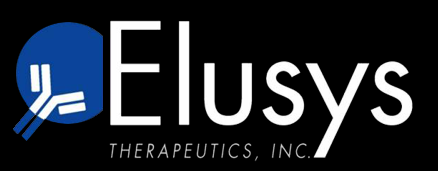ELUSYS THERAPEUTICS FINALIZES HHS CONTRACT TO DELIVER ANTHIM®, ITS TREATMENT FOR INHALATION ANTHRAX, TO THE U.S. DEPARTMENT OF HEALTH AND HUMAN SERVICES
Completed first phase of contract for $50 million; HHS options to procure up to $31 million of ANTHIM by the first half of 2023
Reaffirms ANTHIM as an important medical countermeasure in the U.S. government’s strategy to maintain sufficient quantities of anthrax anti-toxin to effectively respond to an anthrax emergency
PARSIPPANY, NJ, JANUARY 31, 2022 – Elusys Therapeutics, Inc. (Elusys) announced today that it has finalized a contract with the Office of the Assistant Secretary for Preparedness and Response (ASPR) in the U.S. Department of Health and Human Services (HHS) for the continued supply of ANTHIM (obiltoxaximab), an anthrax antitoxin, for use against a potential anthrax attack.
“Elusys is pleased to continue its successful track record of supplying a critical medicine to treat the deadly effects of anthrax exposure,” said Elizabeth Posillico, president and chief executive officer of Elusys. “ANTHIM is a key therapeutic in the U.S. government’s preparedness strategy to protect the U.S. population against natural and man-made biothreats.”
The contract for the procurement of ANTHIM consists of a base period of performance, valued at $50 million, which has been fulfilled. The contract includes options valued up to $31 million. If all options are exercised, the total contract value will be $80,864,000 with completion of the contract expected by the first half of 2023. Contract 75A50121C00073 is funded by HHS ASPR.
As previously announced, Elusys has executed a definitive merger agreement with Heat Biologics, Inc. (NASDAQ: HTBX), pursuant to which Elusys will merge into a wholly owned subsidiary of Heat. The acquisition is expected to close during the first quarter of 2022 and is subject to customary closing conditions.
ANTHIM is a monoclonal antibody that binds to the protective antigen (PA) component of anthrax toxin. ANTHIM’s toxin neutralizing activity prevents entry of anthrax toxin into susceptible cells, avoiding further spread of the toxin throughout the body and the ensuing tissue damage that leads to death. ANTHIM is supplied as single-dose vials for IV infusion.
ANTHIM is indicated in adult and pediatric patients for the treatment of inhalational anthrax due to Bacillus anthracis in combination with appropriate antibacterial drugs, and for prophylaxis of inhalational anthrax when alternative therapies are not available or are not appropriate. ANTHIM should only be used for prophylaxis when its benefit for prevention of inhalational anthrax outweighs the risk of hypersensitivity and anaphylaxis. The effectiveness of ANTHIM is based solely on efficacy studies in animal models of inhalational anthrax. There have been no studies of the safety or pharmacokinetics (PK) of ANTHIM in the pediatric population. Dosing in pediatric patients was derived using a population PK approach. ANTHIM does not have direct antibacterial activity. ANTHIM should be used in combination with appropriate antibacterial drugs. ANTHIM is not expected to cross the blood-brain barrier and does not prevent or treat meningitis.
Anthrax is a life-threatening infectious disease caused by Bacillus anthracis. Cases of inhalational anthrax in humans can occur through intentional spread of B. anthracis spores as a biowarfare or bioterrorism agent. B. anthracis spores introduced through the lungs lead to inhalational anthrax, which is deadly in humans.
IMPORTANT SAFETY INFORMATION Including BOXED WARNING
WARNING: HYPERSENSITIVITY and ANAPHYLAXIS
Hypersensitivity reactions, including anaphylaxis, have been reported during ANTHIM infusion. ANTHIM should be administered in monitored settings by personnel trained and equipped to manage anaphylaxis. Stop ANTHIM infusion immediately and treat appropriately if hypersensitivity or anaphylaxis occurs.
Hypersensitivity and anaphylaxis have been reported during the IV infusion of ANTHIM. Due to the risk of hypersensitivity and anaphylaxis, ANTHIM should be administered in monitored settings by personnel trained and equipped to manage anaphylaxis. Monitor individuals who receive ANTHIM closely for signs and symptoms of hypersensitivity reactions throughout the infusion and for a period of time after administration. Stop ANTHIM infusion immediately and treat appropriately if hypersensitivity or anaphylaxis occurs. Pre-medication with diphenhydramine is recommended prior to administration of ANTHIM. Diphenhydramine pre-medication does not prevent anaphylaxis and may mask or delay onset of symptoms of hypersensitivity.
The safety of ANTHIM has been studied only in healthy volunteers. It has not been studied in patients with inhalational anthrax. The most frequently reported adverse reactions were headache, pruritus, infections of the upper respiratory tract, cough, vessel puncture site bruise, infusion site swelling, urticaria, nasal congestion, infusion site pain, and pain in extremity.
USE IN SPECIFIC POPULATIONS
Pediatric Use: There have been no studies of the safety or PK of ANTHIM in the pediatric population.
To see the complete prescribing information for ANTHIM,
click here.
About Elusys Therapeutics, Inc.
Elusys, based in Parsippany, NJ, is focused on the development of antibody therapeutics for the treatment of infectious disease. ANTHIM®(obiltoxaximab) Injection, the company’s monoclonal antibody (mAb) anthrax antitoxin, received market clearance by the U.S. Food and Drug Administration (FDA) in March 2016. In July 2020, Health Canada approved ANTHIM’s New Drug Submission (NDS) for the treatment of inhalation anthrax. ANTHIM has also received marketing approved in the E.U. and the U.K., under the trade name of Obiltoxaximab SFL. For more information, please visit
www.elusys.com.
Elizabeth Posillico
Elusys Therapeutics, Inc.
t: 973.808.0222
e:
eposillico@elusys.com
